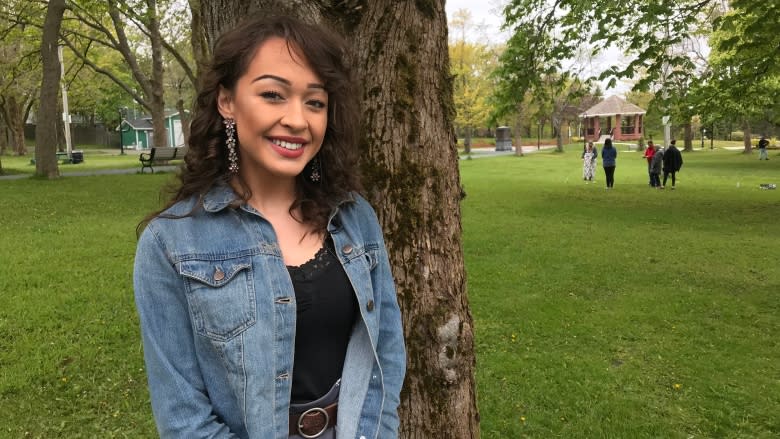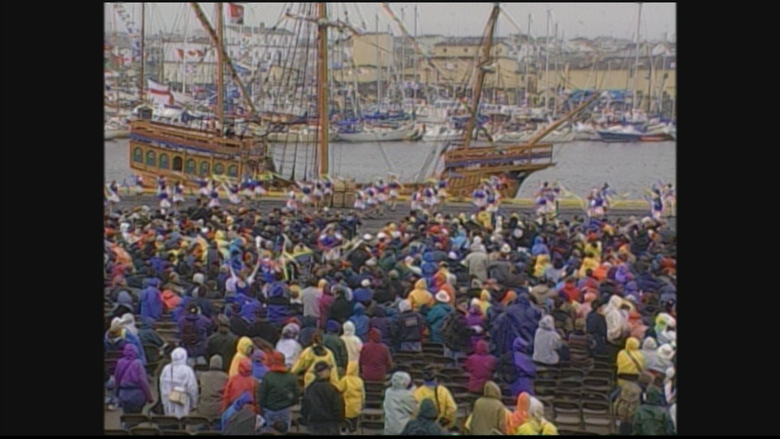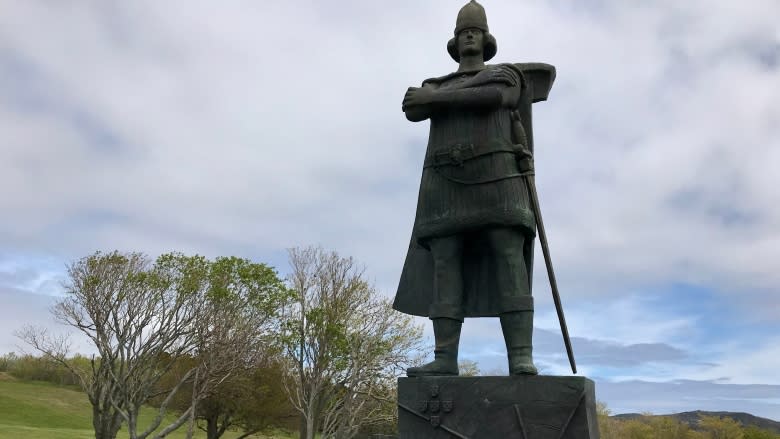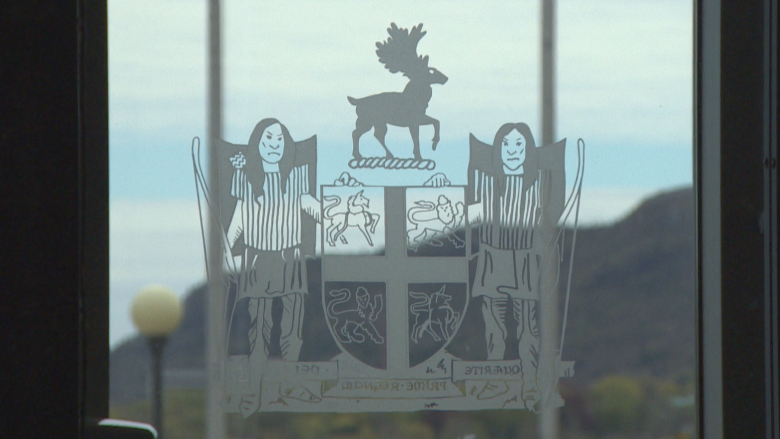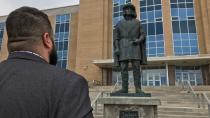Call for statue in St. John's to remember Shanawdithit, last of her people
Bryanna Brown gazed somberly at the rectangular plaque erected in memory of Shanawdithit, the last known Beothuk.
It's mounted on a rock in Bannerman Park in St. John's, near the Military Road entrance.
"I do not believe that plaque is enough for me," said Brown, 20.
The Inuk Memorial University business student is not alone in her call for a more visible monument to Shanawdithit in the capital city.
Christopher Sheppard, the president of the National Association of Friendship Centres and the executive director of the St. John's Native Friendship Centre, said a statue of Shanawdithit should be at the entrance to Confederation Building instead of the John Cabot statue that's there now.
Sheppard said he's not calling for Cabot's statue to be removed but for recognition of other aspects of the province's history, particularly what happened to the Beothuk.
"It may be nice to acknowledge that John Cabot sailed here in 1497, but that signalled the end of a group of people that we have to go to The Rooms to learn about," said Sheppard.
Do not observe Discovery Day holiday
John Cabot, or Giovanni Caboto, is credited with discovering the island of Newfoundland on June 24, 1497, and Discovery Day is a provincial government holiday in Newfoundland and Labrador.
The place where the explorer actually made landfall remains under debate; the list of possibilities includes both Newfoundland's Cape Bonavista and Cape Breton.
But if it was Newfoundland, Indigenous people lived here thousands of years before his arrival, and the Norse settlement at L'Anse aux Meadows dates to around the year 1000.
Neither Sheppard nor the staff at the St. John's Native Friendship Centre nor Brown observe Discovery Day.
Brown said she rejects the notion that Indigenous people in Newfoundland and Labrador were "discovered," and called the holiday upsetting.
"On one end, it might be a day of discovery, and to celebrate, but for my people on the other end, it marks a lot of trauma, a lot of terrible things," said Brown, one of nine Indigenous young people from across Canada who recently appeared before the Senate Committee on Aboriginal Peoples as part of the Youth Indigenize the Senate initiative.
'Contact was the beginning and we know what the end was'
Shanawdithit died June 6, 1829, more than 300 years after Cabot's arrival in North America.
"It didn't happen at the same time," said Sheppard. "You have 1497 and 1829. But it was the beginning. Contact was the beginning, and we know what the end was."
For the Beothuk, year-round European settlement in Newfoundland in the 17th century led to drastic change.
There was violence between the Europeans and the Beothuk. Reduced access to coastal areas, and the salmon and seal meat they provided, as well as exposure to European diseases took a heavy toll on the Beothuk in the 18th and 19th centuries.
Shanawdithit died from tuberculosis at the age of 28.
A small, easily overlooked plaque in front of the Riverhead Wastewater Treatment Facility on Southside Road in St. John's indicates its location is near the place where she was buried.
Statue of Portuguese explorer Corte-Real 'gigantic'
Brown contrasted it with the statue of Portuguese explorer Gaspar Corte-Real near Confederation Building in St. John's, donated in 1965 by the Portuguese Fisheries Organization in gratitude for the hospitality shown to the Portuguese fishermen who worked the Grand Banks.
"That statue is gigantic, you cannot miss it. Everyone drives past it and they see it. And to see that there is not a statue of Shanawdithit, to see that there is a statue of him still standing very tall, I think that is quite insulting," she said.
There is a life-sized statue of Shanawdithit in the forest surrounding the grounds of the Beothuk Interpretation Centre in Boyd's Cove. Gerald Squires created it and Lubin Boykov poured the bronze. The unveiling took place in the year 2000.
Call for recognition of Indigenous history and culture
But Sheppard wants a statue in St. John's as well, given that Shanawdithit died in the capital city, either somewhere close to Confederation Building or downtown.
The St. John's Native Friendship Centre holds an annual sunrise ceremony near the plaque to Shanawdithit in Bannerman Park on June 21. This year's remembrance will start at 6 a.m.
Sheppard said that as an Indigenous person in the province, he finds the lack of related images and memorials challenging, pointing out that there are even statues of a Newfoundland dog and a Labrador retriever in St. John's.
"I want a day in this province to recognize the history of Indigenous people and the Indigenous people that exist here," said Sheppard.
Brown said she would like to see people across Newfoundland and Labrador celebrate National Indigenous Peoples Day on June 21.
Premier Dwight Ball, the minister responsible for Indigenous Affairs, said Discovery Day will go ahead as planned this year but added he's willing to consider the issue.
"It just goes to show, once again, how things evolve over time," said Ball.
The provincial Liberal party passed a resolution at its annual general meeting this past weekend calling for the province's coat of arms to be updated.
At the meeting, Torngat Mountains MHA Randy Edmunds referred to the representation of what he called "noble savages" on the coat of arms. As an aboriginal person, Edmunds said, he believes the province has made progress since the coat of arms, with its shield flanked by a pair of Beothuk men, was drawn up in the 1600s.
Afterward, Ball told reporters change is coming.
"I can guarantee you that is something we'll be looking at — and modernizing — what those symbols should appropriately reflect," Ball said.
It's difficult to find an official image of the coat of arms on the government's website.
A page within the Communications and Public Engagement section says the coat of arms is not a good marketing tool and "does not represent all the incredible qualities of our province and our people."
National Indigenous Peoples Day events in St. John's are open to the public, including celebrations starting at 4:30 p.m. on June 21 at the Techniplex on Churchill Ave.

